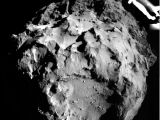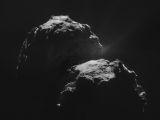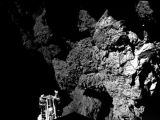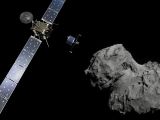Back in August, the European Space Agency's Rosetta probe reached Comet 67P/Churyumov-Gerasimenko, placed itself in the celestial body's orbit and began circling it.
Fast forwards a few months, and just yesterday, scientists with the Agency released the first ever color image of Comet 67P/Churyumov-Gerasimenko the Rosetta spacecraft has until now managed to obtain.
The image is included in the gallery below, and as promised, it will definitely make your eyes tear. The thing is this will happen because you'll strain your eyes too much looking to catch a glimpse of some actual colors.
That's right, the Agency's first ever color image of Comet 67P/Churyumov-Gerasimenko is black and grey all over. This is how the human eye would see the celestial body without any help from all sorts of instruments.
“Rosetta's OSIRIS team have produced a color image of Comet 67P/Churyumov-Gerasimenko as it would be seen by the human eye,” the scientists behind the Rosetta mission explain in a statement.
“As anticipated, the comet turns out to be very grey indeed, with only slight, subtle color variations seen across its surface,” the European Space Agency astronomers go on to detail.
It is understood that this first ever color image of the Rosetta spacecraft's target comet is made up of three distinct pictures that the OSIRIS scientific imaging system took in red, green and blue filters.
The resulting image shows that Comet 67P/Churyumov-Gerasimenko looks pretty much the same from one end to the other. Simply put, there are no major variations in composition. Besides, the comet appears to be covered in dark dust.
Scientists plan to continue studying the celestial body and hope that they will soon figure out what this dust is and how it got there, maybe even obtain several other color images.
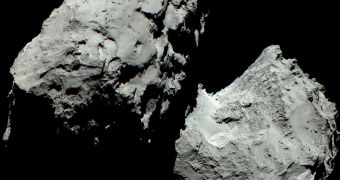
 14 DAY TRIAL //
14 DAY TRIAL // 
